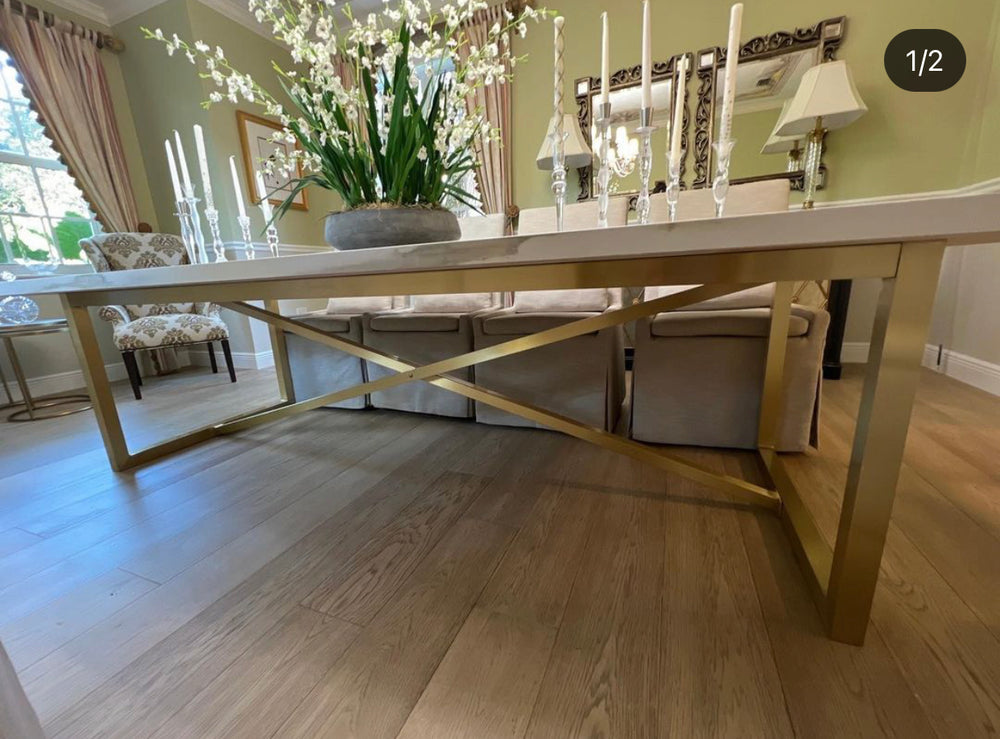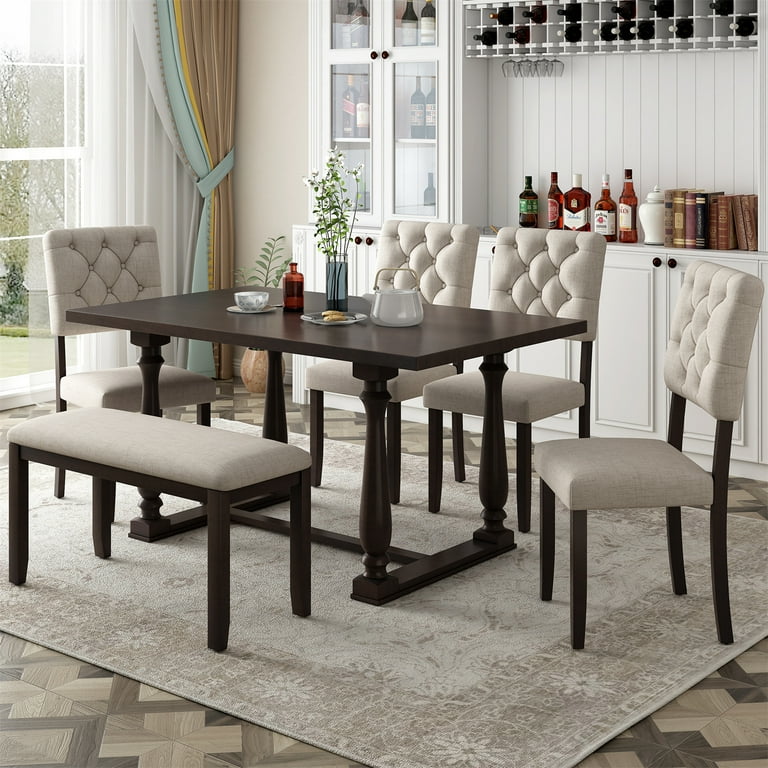Dining Room Table Legs: A Guide to Selecting the Right Style for Your Home
Dining Room Table Legs: A Guide to Selecting the Right Style for Your Home
Blog Article
Professional Tips for Putting Up Eating Area Table Legs for Optimum Security
When it comes to setting up dining-room table legs, achieving optimum security is extremely important for both capability and looks. The process begins with choosing the appropriate materials and hardware, adhered to by thorough alignment and factor to consider of weight circulation. Each step plays a crucial role in ensuring that the completed item endures daily usage without endangering safety and security or design honesty. Comprehending the nuances of these elements can substantially affect the overall result. What certain techniques can boost security even additionally?
Choose the Right Legs
When picking the proper legs for your eating area table, it is important to take into consideration both functionality and visual appeals. The legs you choose will substantially impact the overall style and security of the table. First, evaluate the table's meant usage; if you anticipate regular celebrations, tougher legs, such as those made from strong timber or steel, may be extra ideal, as they supply boosted sturdiness and support.
Standard dining tables usually range from 28 to 30 inches in elevation, so ensure the legs align with this requirement for comfort. Tapered legs can add a modern touch, while turned legs might share an extra classic aesthetic.

Select Appropriate Equipment
How can the appropriate hardware enhance the stability and longevity of your dining area table? The option of suitable equipment is critical to guaranteeing that the legs of your table are firmly connected and able to hold up against routine usage. High-quality screws, bolts, and braces supply the necessary strength to sustain the weight of the table, in addition to any type of additional tons placed upon it throughout meals or gatherings.
When selecting screws, choose for those made from long lasting materials such as stainless-steel or brass, which withstand corrosion and preserve integrity gradually. The size of the screws is similarly essential; they must pass through deeply into the table's structure without jeopardizing stability. For bolted connections, consider utilizing lock washing machines to avoid loosening due to resonance or motion.
Furthermore, using edge brackets can add additional support, specifically for bigger tables or those with larger tops. These brackets disperse weight uniformly and help preserve the table's shape. Ensuring that the hardware you choose is suitable for the details materials of your table will better enhance its overall stability and long life, permitting you to appreciate your eating experience for years ahead.
Ensure Proper Positioning
Appropriate positioning of dining area table legs is essential for both aesthetic appeal and useful security. Misaligned legs can bring about an irregular tabletop, which may not only be visually unappealing yet also jeopardize the table's functionality. To accomplish optimal positioning, start by measuring the range from the table's edges to the leg attachment factors. This makes sure that each leg is located equidistant from the sides, producing a balanced look.
Make use of a degree throughout setup to More Help validate that each leg is vertical to the tabletop. This step is crucial, as also minor inconsistencies can rise right into significant security issues with time. It is advisable to note the desired leg settings on the bottom of the table with a pencil or masking tape before safeguarding them. This method serves as an aesthetic overview, allowing for adjustments as needed.
In addition, verify the alignment after the first screws are tightened, as changes may be required prior to totally securing the equipment. By focusing on proper placement, you not just boost the table's general layout yet additionally make sure that it remains steady and functional for many years to find.

Think About Weight Circulation
After making certain correct positioning of the dining-room table legs, it is very important to consider weight circulation to enhance stability and capability. dining room straight from the source table legs. Proper weight circulation is vital in preventing making sure and wobbling that the table can sustain its intended load without threat of tipping or falling down
When placing the legs, ensure they are positioned at equivalent distances from the center of the table to evenly disperse the weight across the structure. Think about the weight of the table top and any type of items that will regularly hinge on it, such as tabletop home appliances or decorative pieces. Tables with much heavier surface areas should ideally have legs located closer to the corners, as this optimizes the base of support and reduces the risk of instability.
Furthermore, if the table is intended for usage in a high-traffic area, consider utilizing much heavier materials for the legs or adding supporting elements, such as cross-bracing or a lower shelf - dining room table legs. These changes can aid preserve balance and protect against shifting during usage. Ultimately, a well-considered weight circulation method will significantly enhance the table's general performance, guaranteeing it continues to be a useful and appealing focal point for your eating area
Examination Stability Prior To Use
Testing the security of the dining area table prior to usage is a critical action that needs to not be forgotten. Making certain that the table is steady and protected can prevent accidents dining room table legs and prolong the lifespan of the furniture. Begin by using mild pressure to different factors on the table surface area. Push down on the center and afterwards along the edges, moving or observing any kind of wobbling. If the table reveals instability, identify the legs or joints that might require modification.
Next, check that all screws and fasteners are tightened up effectively. Loose links can cause instability and possible damage over time. If essential, utilize wood adhesive on joints to boost stability, guaranteeing to enable ample drying out time.

Conclusion
In final thought, the installation of dining-room table legs requires cautious consideration of products, weight, placement, and equipment distribution to attain maximum stability. By choosing durable legs and top notch fasteners, ensuring precise alignment, and dispersing weight uniformly, the structural integrity of the table can be considerably improved. Conducting a security test before regular use better guarantees that the table will withstand day-to-day pressures, consequently offering a trusted and safe eating experience.
When it comes to installing dining room table legs, attaining optimum security is critical for both performance and visual appeals. The legs you choose will dramatically influence the overall design and stability of the table (dining room table legs). Standard eating tables commonly range from 28 to 30 inches in elevation, so make certain the legs align with this requirement for comfort.Proper alignment of eating space table legs is important for both visual charm and functional stability.In conclusion, the setup of dining area table legs requires mindful consideration of products, positioning, weight, and hardware circulation to attain maximum stability
Report this page